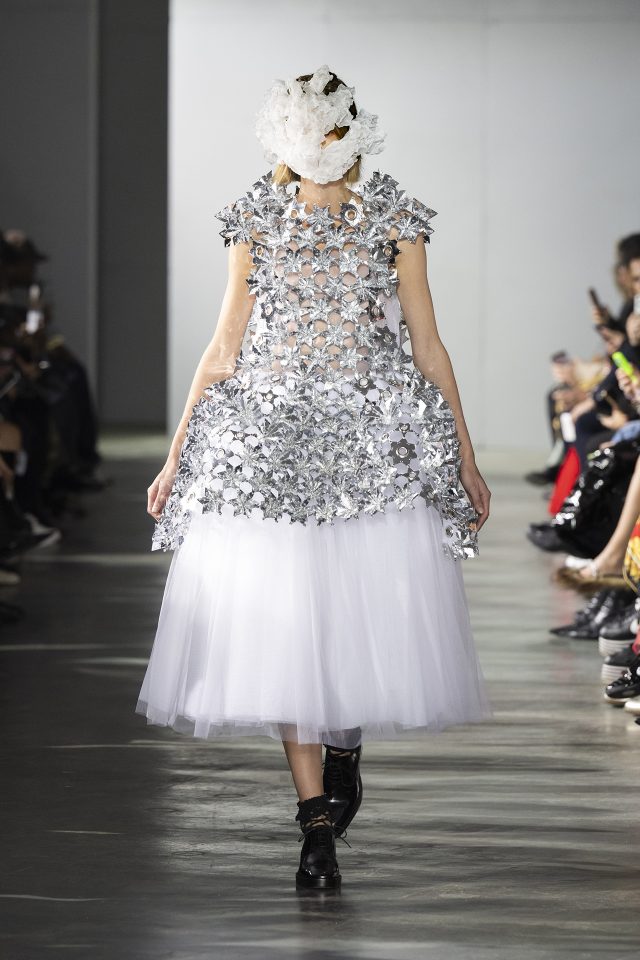『Sumally (サマリー) 』CEO 山本憲資インタビュー
News
『Sumally (サマリー) 』CEO 山本憲資インタビュー
Interview With Kensuke Yamamoto
2011年9月にスタートした、ユーザーの持っているモノ(have)や欲しいモノ(want)をシェアしあうソーシャルサービス『Sumally (サマリー) 』。「モノの百科事典」をコンセプトに、世界中に存在するあらゆるモノをひとつのフォーマットに整理し、まとめる存在となることを目指す同サービスは、ローンチするなりクリエイティブ・ファッション業界の感度の高い層を中心に話題となり、日本発のプラットフォームサービスとして注目を集め続けている。
*You’ll find the English text after the Japanese.
2011年9月にスタートした、ユーザーの持っているモノ(have)や欲しいモノ(want)をシェアしあうソーシャルサービス『Sumally (サマリー) 』。「モノの百科事典」をコンセプトに、世界中に存在するあらゆるモノをひとつのフォーマットに整理し、まとめる存在となることを目指す同サービスは、ローンチするなりクリエイティブ・ファッション業界の感度の高い層を中心に話題となり、日本発のプラットフォームサービスとして注目を集め続けている。
ファウンダーは元『GQ JAPAN (ジーキュー・ジャパン) 』編集者の山本憲資氏。サイトの開発は、中村勇吾氏率いる日本を代表するデザインスタジオtha ltd.(ティー・エイチ・エー)のデザインディレクター大輪英樹氏がデザインを担当し、同じく当時tha ltd.のエンジニアでありイメージブックマークサービス『FFFFOUND! (ファファファファウンド) 』の生みの親でもある北村慧太氏が手がけている(現在、北村氏は『Sumally』のCTO)。
「誰がそれを持っていて、誰が欲しがっているのか。そして誰が売っているのか」。そこまでを網羅してこそ2010年代の百科事典。そんな未来を見据える山本氏。雑誌の編集者から起業家へと転身し、前職でつちかったネットワークを生かしてサイトローンチ時にはメディアなどで紹介されているインフルエンサー100名から5,000点以上のアイテムを撮影し、最初のコンテンツにしたという。
茂木健一郎氏 (脳科学者) 、伊藤直樹氏 (クリエイティブディレクター)、藤原ヒロシ氏、平野啓一郎氏 (小説家)、宇野薫氏 (格闘家)、高城剛氏、スプツニ子氏 (アーティスト)など、誰もが知っているさまざまなジャンルの有名人が参加し、彼らを中心とした高感度層のユーザーを着々と獲得している。
そしてサービスがローンチしてちょうど1年が経った今年の9月、『Sumally』を運営する株式会社サマリーは、第三者割当増資を発行し、資本業務提携先としてリード・キャピタル・マネージメント株式会社の運営ファンドおよび株式会社オプトと締結することを発表した。この資本業務提携で増資額は約1.5億円となる。そのことにより今後さらなるサービスの拡充が期待され注目を集める『Sumally』の山本氏に、この1年間の総括と今後の展望を聞いた。
—まずローンチから1年が経ちましたが、手応えを教えてください。
総じて右肩上がりで成長できているのでよかったと思っています。ユーザー数は約8.5万人。登録されたアイテム数は50万点強。「want it」「have it」などをされたアクティブ数は1,000万超です。先のことは分からないと思っているところはあるのですが、尻すぼみにならなかったという意味では計画通りにきていると思います。
—海外からの反応はどうでしょうか?
現在、『Sumally』ユーザーの10~15%くらいが海外のユーザーです。アジアとかでもっと流行るといいなとは思っているんですけど、いまのところは海外では欧米からのアクセスが多いです。おそらくcolette (コレット) 等のオフィシャルページがあるのが理由のひとつだと思います。言語対応の点では、いまは日本語版と英語版ができていて、もっと多言語化していきたいという思いはありますね。
—『Sumally』のチーム構成を教えてください。
スタッフは僕を含めて7人います。エンジニアが3名で、一名は先述のtha ltd. 出身の北村がCTOとして関わっています。加えてYahooとSonyから転職してきたエンジニアが一名ずついます。あとプロジェクトマネージャーが一名と、ブランド対応などの担当が一名。あと事務・経理が一名という構成です。
—チームのキャスティングを考えるにあたって意識している点はありますか?
サービスをやっていこうと思うと、いかに内製化して速いスピードでやっていくかというのが重要なポイントだと思っています。まだ業務が定量的に決まっているわけではないので、自分で考えてコミットできる人材をチームに引き入れて成長していく必要があると思っています。
—今回、1.5億の出資を獲得したとのニュースがありました。
以前、docomo (ドコモ) の20周年のキャンペーンをやらせていただいたのですが、そういう形で『Sumally』のサービスと相性がよいプロモーションができるのであれば、積極的に使っていただきたいと思っていました。ただ現状社内に営業リソースがあまりなかったので、その部分をうまくオプトのリソースを借りられればいいなというのがあって入っていただいたというのが経緯です。
—増資が決まったということで、これから開発にも勢いが出てくると思うのですが、あらためて当初から実装を予定している『Sumally』のeコマース機能についてご説明をお願いします。
いままでモノを購入したいときはわざわざ買いに行かないとダメだったと思うのですが、『Sumally』ではユーザーが「want it」をしているページで売り手が販売できるという展開を考えています。例えば、Lady GaGa (レディ・ガガ) があるブランドのアイテムを「have it」したら、おそらく多くのユーザーがそのアイテムを「want it」するでしょう。そのページでそのブランドが直接その商品を販売できる。そんなマーケットを『Sumally』では作ります。これまでのeコマースは売っているモノを並べるという前提で成立しているのですが、これは非常に売り手オリエンティッドな仕組みで、マーチャンダイジング的にもユーザビリティ的にも原始的な仕組みです。またすでに売っているモノをユーザーが仕分けをするだけではなく、『Sumally』ではまず欲しいモノのリストをユーザーが作り、そこにマーケットを付けてくるという仕組みを作っていきたいと考えています。最初はBtoCの形から展開していく予定で、現在、参加してくれるブランドやショップを募集中です。加えてアプリのアップデートにも力を入れてきます。PC版はずいぶんブラッシュアップできてきているのですが、モバイルのユーザビリティも改善していきます。
—グローバルスタンダードなサービスを目指す『Sumally』としては、今後『Fancy (ファンシー)』といった競合サイトに対してどういう差別化を計っていく予定でしょうか?
最初は世界で使われるサービスを作ろうと漠然と思っていたのですが、やりながら心境の変化がありました。『Sumally』は実際の世の中で考えたときに「街」的な存在を目指しています。同じ「街」に来る人というのは何かしら共通の感覚をゆるやかに共有しているのでは、と。その共通言語のアウトプットとしての象徴が「渋谷」であり「原宿」であり「秋葉原」という形に表れている。その共通の感覚に共鳴して商業施設が作られ、またそこに人が集まってくるというループが繰り返され大きい雪だるまになった時に「街」になります。そういう風に「街」を作ると考えたときに、「ニューヨーク」を作るとなるとやっぱりアメリカ人に負けるんですよね。「パリ」を作ろうと思ったらやっぱりフランス人に負ける。「ロンドン」を作ろうと思ったらイギリス人に負ける。じゃあ僕らになにが作れるのかというのを考えると、やっぱり「原宿」や「渋谷」、「表参道」、「銀座」であり「秋葉原」であると思うんです。つまり、自分たちが作れるモノで、世界に通用するモノはなにかと見極めるコトがすごく大事だと思っていて、そこでがむしゃらに「ニューヨーク」を作ろうとしても、まあ絶対勝てないワケです。限られたリソースを注ぐ対象へのピントを外さないことはすごく大事だなとサービスをやればやるほど思うようになってきました。そこが必然的に差別化のポイントになってくるとは思います。
—まずは東京の「街」を作ってからグローバルに進出していくと。市場の規模的にも、日本でもまだまだ可能性があるといった感じでしょうか?
市場規模で考えたときに、「原宿」という街が「ニューヨーク」と比べると、規模では明らかに小さいんですけど、「原宿」が「ニューヨーク」にクオリティという側面で負けているかっていえば、そんなことはないと思っています。市場の大きさというのは大事なんですけど、現状そこが論点ではなくて、まずはサービスとしての回転速度をあげるというのが重要です。回転速度があがれば、あとは燃料を注入してあげたら回るので。その回転速度の源泉が、「街」の個性やアイデンティティになってくる、そういう観点では東京は世界に十分通用する要素が存分存在している地域だと認識しています。実際、僕のアイデンティティもこの街に根ざしたものですし、この街の人たちにネットワークが多少あって、そういう人たちを巻き込んでやろうとしている以上、ここで戦えるもので世界と戦っていくしかないと、決意として持っています。
—ウェブサービスにも東京ならでは個性を作るというのはとてもおもしろい考えですね。山本さんはウェブサービスを運営することに対してどんな魅力を感じていますか?
うちのCTOがよく言っていることなんですけど、広告のプロモーションとウェブサービスって決定的な違いがあって、広告業界のプロモーションは花火で、ウェブサービスは盆栽だと。広告のサービスは長くても1〜2ヶ月。早いものだと1週間のキャンペーンだったり。『Sumally』はようやくローンチから1年です。ローンチ時にはもちろん多少反響というのは必要ですけど、そこから成長し続けなきゃいけない。広告の世界とどっちが上とか下とか言っているわけじゃないんですけど、短距離と長距離みたいなものかもしれないですね。とにかくやり続けないといけないですし、成長させ続けないといけないというところはおもしろみでもあり、タフなところでもあります。
—オフィシャルアカウントの審査はあるのでしょうか?また今後増やしていきたいジャンルはありますか?
興味のあるブランドやショップはお問い合わせください。自分が持っていること、欲しいということを誰かに伝えたいと思うモノであればジャンルに関わらず積極的に取り組んでいきたいですね。
—最後に一言おねがいします。
世界中で使われるサービスになれるように頑張ります。
<プロフィール>
山本憲資 (やまもと けんすけ)
Sumally CEO。一橋大学商学部卒業。大学卒業後、電通に入社。その後コンデナスト・ジャパンに転職し、雑誌『GQ JAPAN』にて編集者に。2009年9月にコンデナストを退社。翌年4月、『Sumally』を設立。
The social networking service Sumally launched in September 2011 as a venue for users to share items they “have” and “want”. Behind the service was the concept of an “encyclopedia of things” into which items and goods from around the world were organized into a single format. Aiming to develop into an online information collection, the service gathered a great deal of positive attention from the creative fashion industry upon its launch, and it has stayed in the media spotlight as a Japan-based platform service.
Founded by former GQ Japan editor Kensuke Yamamoto, Sumally’s development is being handled by Yugo Nakamura’s design studio “tha ltd.”, with design director Hideki Owa heading the project. Furthermore, tha ltd. engineer and image bookmark service “FFFFOUND!” developer Keita Kitamura is also on the project (Currently, Kitamura is serving as the CTO of Sumally).
“Who has what and who wants what? And who is selling what?” By providing comprehensive answers to these questions, Sumally is the encyclopedia of the 2010s. This is the future that Yamamoto has his sights set on. When jumping from magazine editor to entrepreneur, he used his network from his previous job to have over 5,000 items from 100 influencers photographed and used for the site’s first set of contents.
Recruiting the likes of Kenichiro Mogi (neuroscientist), Naoki Ito (creative director), Hiroshi Fujiwara, Keiichiro Hirano (novelist), Kaoru Uno (martial artist), Tsuyoshi Takashiro, Sputniko (artist), and other well-known figures from a variety of genres as central participants, the website continues to attract more and more users.
Exactly one year since the launch of the site, Sumally’s parent company, Sumally Co. Ltd. issued third-party shares as share capital to Reed Capital Management’s operations fund and further announced that it would enter into a similar contract with OPT Inc. Overall, a capital increase of about ¥150 million can be expected for Sumally. We talked to Yamamoto about the new Sumally services that we can expect as a result of the share capital.
—To start, it has been one year since the launch, so tell us how Sumally is doing.
Overall, Sumally has experienced rapid growth. We now have approximately 85,000 users and 500,000 registered items. The amount of activity we have, in reference to the total number of “want it”s and “have it”s, exceeds 10 million. We are a little bit unsure of where to go from here, but in the sense that the numbers haven’t tapered out, the site has gone as planned up until now.
—What kind of reaction are you getting from overseas?
Currently, about 10-15% of Sumally’s users are from overseas. It would be great if it caught on more in Asia, but at the moment most of our overseas users are from North America and Europe. I presume that our appearance on the official website of colette and other major fashion sources is one of the reasons for this. At the moment, we only support English and Japanese, but I am hoping that we can expand to cover more languages in the future.
—Tell us about the structure behind “Sumally”.
Including myself, we have a total of 7 staff on the project. This includes 3 engineers, one of whom is the aforementioned Kitamura from tha ltd., who is also serving as our CTO. The other two joined our team after leaving Yahoo! and Sony. We have one project manager and one brand manager. Finally, we have one staff member that handles financial and secretarial duties.
—What do you place importance on when casting members for your team?
When offering a service, I believe thinking about how we can self-manufacture the company and stay up-to-speed in a fast-paced environment is the most important point. The amount of work we have in one day is not really clear yet and changes daily, so we really need human resources that are self-thinkers, committed, and can really lead the team’s development.
—There was news that, as a result of the recent deal, you obtained about ¥150 million in investments.
Previously, I worked on docomo’s 20th anniversary campaign, so I wanted make a similar move to promote Sumally. However, we don’t currently have sales resources within the company, but I thought that if I could borrow those resources from OPT, it could become more of a reality. That was the basic sequence of events.
– I suppose that the increase in capital investment will be a strong force for the development side. Tell us about the new e-commerce function that you are planning to implement in Sumally.
Up until now, when you want to buy something (that you find on Sumally), you have to go out and buy it, but we are considering offering a purchase option on the “want it” page. For example, if Lady GaGa clicked on “have it” for an item, tons of other users are likely to click “want it”. They would be able to buy the product then and there on that page. That’s the kind of market that “Sumally” hopes to create.
Online shopping up until now has just lined up products for people to buy in a highly sales-oriented setup. But from a merchandising and a usability perspective, it is quite primitive. Sumally does not just separate products that are already being sold based on users tastes. Instead, we are thinking about making a list of what users want and opening up a marketplace there.We plan to start in a B2C format and are currently recruiting brands and shops that would be willing to participate. Furthermore, we are putting more energy into updating the application. The PC version has been brushed up pretty nicely, so we want to work on improving the usability of the mobile version.
—As Sumally enters the global stage, what kinds of plans do you have to distinguish the site from other competitors such as “Fancy”?
At first, I had some vague idea about making a worldwide service, but somewhere down the road, I had a change of heart. Sumally is aiming more to be like a “city” in the future. People who come to the same “city” loosely share common senses and opinions. As an output of that shared language, we have developed towns with specific images in real life, like those we attach to Shibuya, Harajuku, or Akihabara. The resonance of those shared opinions has grown into commercial facilities, and more people who shared those ideas gathered there and it developed into a loop that snowballed into a “city”.
In the same sense, when it comes to making a “city”, I would never be able to make “New York” the way an American could. I could never make “Paris” as well as a French person could. And of course, I can’t do “London” the way an Englishman can. So when I think of what I can make, of course it is Harajuku, Shibuya, Omotesando, Ginza, and Akihabara. I believe it’s important to recognize what we can actually make and communicate to the world. Even if I tried to make “New York”, I would definitely lose. With limited resources, it is extremely important not to lose sight of this goal. This has grown more and more evident to me throughout the project. This will inevitably be how we differentiate ourselves from other competitors.
—First you will make the “towns” of Tokyo and promote them to the world. As far as the scale of the market, don’t you feel that there is still room to grow within Japan?
When you compare the market size of “Harajuku” with that of “New York”, Harajuku is miniscule, but when you compare each area’s qualities, I don’t believe that is the case. The size of a market is important, but that’s not really the point that we’re hitting at. First, we want to get the wheels turning faster on our service. Once we gain some velocity, we just need to add some fuel. The source of that velocity will be the uniqueness and identity of each “town”, and from that perspective, Tokyo has plenty of resources to communicate to the world. Actually, my identity is rooted in these towns, and I have networks with people in these towns, and I have people in these towns involved in this project, so the only force that we have left to take on is the entire world. I am determined about that.
—It’s quite an interesting thought to make a web service out of Tokyo. What is appealing to you about running a web service?
Our CTO often says that the major difference between advertising promotions and web services is that advertising industry promotions are like fireworks and web services are like bonsai trees. Advertising services last at most 1-2 months. Many are as short as one-week campaigns. It has now been one year since the launch of Sunally. The initial launch has many reactions and a lot of energy, but from there, you have to find a way to keep growing. I am not saying that one is a better or worse form of promotions or advertising – it’s more like one is short-run whereas the other is in the long-run. Whatever the case, you have to keep on going with it, and that’s what makes it interesting and challenging to run a web service.
—What kind of approval process is needed to get an official account? And do you plan to expand the number of genres in the future?
Brands and shops that are interested can inquire to us directly.If there is something that you have, something that you wish to communicate to others, we would be happy to work on integrating your item into Sumally, despite genre.
—Please give us a few more words before you go.
We are doing our best to become a service that can be used around the world.
<profile>
Kensuke Yamamoto / Sumally CEO / Bachelor’s in Commerce from Hitotsubashi University. Worked at Dentsu Corporation after graduating. He later moved to Conde Nast Japan as an editor for GQ JAPAN until September 2009. He established Sumally in April of the following year.











